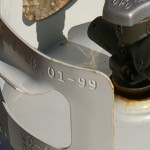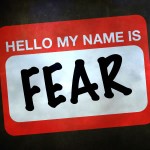By Jeanne Marie Laskas | Photographs by David Graham | From GQ.com | On September 2012
Fast and Furious. Conceal and carry. The Dark Knight theater shootings. In America these days, it seems like everyone is packing heat. In fact, we’re the most heavily armed populace on the planet. So where do most of us go when we need a shiny new Glock or a convenient AK-47? Increasingly to mega-shops like Sprague’s Sports in Yuma, Arizona. That’s where Jeanne Marie Laskas ventured recently, spending a few shifts behind the counter and seeing for herself how we shop, sell, justify, and even come to love the deadliest things among us…

Out-of-state residents can purchase firearms in Arizona read the sign behind the counter at Sprague’s Sports in Yuma. ASK US HOW. I asked a clerk named Ron for details. He was short, packed solid as a ham, with a crew cut and a genial demeanor. He pointed to the cavalcade of hunting rifles lined up on the long wall behind him. “Any of these you can get today—or these over here,” he said, leading me to a corner of the store where two young men in ball caps and a woman with a sparkly purse were admiring a selection of AK-47’s.
“You have to admit this is pretty badass,” the one man was saying. He had a carbine shorty perched on his hip, Stallone-style.
“I don’t know,” the woman said. “To me, it looks mean.”
“It’s supposed to look mean.”
“They should make it in pink,” she said. “Wouldn’t that be cute?”
“You’re shitting me.”
“They should make it in Hello Kitty!” she said. “I would totally buy it if it was Hello Kitty.”
“Sweet holy crap,” the other man said. “That would be the worst possible death. Can you imagine? Shot dead by a Hello Kitty semiauto.”
It was difficult to tell if Ron was listening in on any of this; both of us had our lips pulled back in pretend smiles. “Now, what can I show you?” he asked me while the one guy went on faking his bad death and the woman continued her torture with something about rainbow-colored bullets.
I didn’t really want to buy an assault rifle, or even a handgun, but I was curious to know what buying one felt like, how the purchase worked, what-all was involved. Nobody in my circle back east had guns, nobody wanted them, and if anybody talked about them, it was in cartoon terms: Guns are bad things owned by bad people who want to do bad things. About the only time the people where I come from thought about guns was when something terrible happened. A lunatic sprays into a crowd and we have the same conversation we always have: those damn guns and those damn people who insist on having them.
I had come to Arizona, the most gun-friendly state, to listen to the conversation the rest of America was apparently having. One in three Americans owns a gun. About 59 million handguns, 46 million rifles, and 28 million shotguns—nearly 135 million new firearms for sale in the U.S. since 1986. We are the most heavily armed society in the world. If an armed citizenry is a piece of our national identity, how is it that I’d never even met it?
In Arizona, anyone over 18 can buy an assault rifle, at 21 you can get a pistol, and you can carry your gun, loaded or unloaded, concealed or openly, just about anywhere. The IHOP was said to be the only restaurant in Yuma that prohibited you from bringing your gun in. “Needless to say, most of us won’t eat there,” Ron said. On the rack behind him, assault rifles stood stupid as pool cues, black and blocky, with long magazines protruding erotically this way and that.
“I’m kind of surprised you carry assault rifles,” I said to Ron.
“There’s no such thing as an assault rifle,” he said. “These are ‘military-style rifles’ or ‘modern sporting rifles.’ ”
“But they’re assault rifles,” I noted. I knew that much from TV.
“Assault is one of the worst things the media has ever done to us,” he said. “Have any of these rifles ever assaulted anyone?”
He went on to say I could buy as many of them as I wanted and walk out with my arsenal today. “These guns have helped our industry tremendously,” he said. “They’ve attracted a whole new generation…. Is there one you want to try?” He brought down a Colt AR15-A3 tactical carbine, slammed in an empty magazine, and handed it to me. It felt disappointingly fake, an awesome water pistol, perhaps, or a Halloween prop. I asked if I would need to tell him why I wanted to buy a gun like that or what I intended to do with it. He squinted and smiled and appeared politely speechless. “Would you have to do what, now?” he asked.
It was difficult for us to find a comfortable, common starting place, but the reach was certainly genuine.
Among the things I wanted to talk to Ron and the people at Sprague’s about were killing sprees. America has had a bad run of large-scale gun violence, including the theater shootings in Aurora, Colorado, and, closer to home, Arizona’s infamous 2011 Tucson massacre. I wondered when would be an appropriate time to bring up the subject; a massacre is, well, a massacre, and I feared it would dampen the mood.
A few reported details from the Tucson incident always stuck with me. Before Jared Loughner shot Gabby Giffords, he ran some errands first. He stopped at the Circle K on Ina Road to get something to eat. He went down to the Walgreens to pick up some photos he’d gotten developed. Then he went to the Walmart Supercenter at the Foothills Mall to buy some ammo for his Glock. Something happened there. A snag in the plan. The clerk at the register, who was never identified and whom Walmart officials refused to talk about, said no. He, or she, denied the sale to Loughner, who left and went to a different Walmart six miles away, where he bought enough ammunition to fill two fifteen-round magazines and the thirty-three-round extended magazine he would unload a few hours later into the crowd over at Safeway, killing six and injuring another thirteen, including Giffords.
Why did the first Walmart clerk refuse the sale, and how? What did that person see in Loughner, and where does a private citizen get the authority, or the gumption, to refuse to sell ammo to someone? These questions were never answered, if they were even asked by media providing day and night coverage in the bloody aftermath. The mysterious clerk at the Foothills Mall Walmart dropped out of the headlines almost as soon as he, or she, appeared. What may have lingered then for some, or at least it did for me, was a nagging sense of unfinished business. So these are the people who stand at the front lines, guarding America against its lunatic mass murderers? Clerks at Walmart. Clerks at sporting-goods stores. Minimum-wage cashiers busily scanning soccer balls, fishing tackle, and boxes of Tide.
Ron grew up in Yuma and had worked at Sprague’s for twenty-seven years; several of his co-workers had put in at least twenty. All the clerks milling about the store were clean-cut, dressed in crisp button-down shirts with their names embroidered on the pockets, and the respect they showed the merchandise reminded me of department-store shoe salesmen in the old days who wore suits and used shoehorns. The store was brightly lit and impeccably clean—no dust or cobwebs on the hundreds of bobcat, coyote, elk, and other taxidermy mounted on high. Stray scraps of paper were instantly swept up, Disneyland-style. The merchandise was arranged in boutique fashion: colorful boxes of ammo stacked like candy by the register, a library of gun books and magazines near the restrooms. There was a holster department, a gun-safe department, and an optical-equipment department—OVER 75 MODELS of Binoculars in stock. OVER 100 MODELS of Rifle Scopes in stock. The guns were in the back of the store, and this is where most of the customers hung out.

“I have six handguns—bought five of them here,” an old man said to me. I was waiting for Ron, who’d gone to the back room to find a gun he thought I might like. “I have five rifles, got all of them here,” the man said. “I spend most of my time reloading shells. All my friends are dead.” He had thin white hair and a long, sagging face dotted with age spots. “Do you know what the biggest problem with divorce is? It’s the bedroom. And a lot of it’s the man’s fault. Like a damn rabbit, on and off.”
It felt like we should have had rocking chairs, perhaps a set of checkers between us. This was one of the things I liked most about Sprague’s: the general-store feel. Groups would form, strangers becoming neighbors, sharing stories. “I lost my wife in November,” the man said. “Sixty years. Now my kids keep trying to get me to go live with them in California. My doctor said, ‘What’s your lifestyle?’ I told him guns. He said, ‘Stay in Yuma.’ ”
Ron came back carrying two assault rifles. “Hey there,” he said, greeting the old man. “What brings you in today?”
“Same as yesterday.”
Gently, Ron placed the rifles on the counter. He told me one was a Smith & Wesson M&P15 and the other a Heckler & Koch 416. They looked every bit as formidable as the first one I held, but these were .22s, and Ron said they’d be easier to shoot.
“So more like beginner assault rifles?” I asked.
“There-is-no-such-thing-as-an-assault-rifle,” Ron said.
The Smith M&P15 sold for $425 and had a snazzy bright orange cardboard wrapper on its fat barrel that read “Kick Brass.” “I’ll go with this one,” I said.
“Okay, you’ll need to fill this out.” He handed me a six-page government-issued form, told me not to make any mistakes or else I’d have to start all over. “No cross-outs,” he said.
Anyone in America who wants to buy a gun has to fill out ATF Form 4473, with thirty-six questions in all, and hand it in to the dealer selling the gun. The clerk takes the form and contacts NICS, the FBI’s National Instant Criminal Background Check System (open every day of the year except Christmas), where an examiner runs your answers through a series of databases to make sure you haven’t lied and, within minutes, tells the clerk what to do: proceed with the sale, deny it, or delay it for three days while NICS does some deeper digging and decides later.
PLEASE PRINT.
Are you a fugitive from justice?
Have you ever been adjudicated mentally defective?
Are you subject to a court order restraining you from harassing, stalking, or threatening your child or an intimate partner or child of such partner?
I stood there puzzling through the form when a guy walked up, replacing the old man beside me, and he, too, struck up a conversation. He was a man of some heft in a red T-shirt and sunglasses wrapped behind his neck, as was the fashion in Yuma. “You say you’re just starting out?” he said. “You picked a good one. With the HK, you would have just been paying for extra steel you don’t need.”
“That’s sort of what I thought,” I lied.
“I just got that same Smith for my kid,” he said.
I looked at him. He appeared far too young to have a grown son.
“Wait, how old is your kid?” I asked.
“Six,” he said.
···Richard Sprague, the owner of Sprague’s Sports, is a slender man in his fifties with a tapered face, coarse graying hair, and an easy smile. Other Arizona gun stores would not even entertain my request to visit and ask questions about selling guns and ammunition, but Richard without hesitation invited me to spend as much time as I wanted at Sprague’s—behind the counter, in the back room, at the shooting range, anywhere I wished. I thought it a somewhat courageous offer, especially given that a 2010 Washington Post investigation spectacularly put Sprague’s eleventh on a list of top U.S. stores that sold guns traced to crime scenes in Mexico. Attempts to stem the flow of arms south of the border began intensifying during the last Bush administration and have continued with the ATF’s infamous Fast and Furious operation.
In response to the hoopla about his store, Richard said that he and his employees were always on the lookout for straw purchasers: a person buying a gun for someone who hadn’t passed the background check. “Unfortunately,” he said, “some people do break the law once they leave our store.” The Mexican border was just eight miles away, and so proximity, rather than reckless selling, was the truer though far less titillating explanation of the ranking. And the number-crunching behind the headline was misleading: The actual number traced to Sprague’s was just fifty-five out of a spectacular 60,000 guns smuggled to Mexico.
Richard was a busy man, with quick eyes, and he spoke of “firearms” and “the industry” in the dry, responsible way a man might discuss flood insurance. Still, he talked more about his family than he did guns. He spoke proudly of the long line of Spragues (his father opened the store in 1956), and the raw weirdness of being the last of his generation left. He toured me around Yuma, a cozy town of 93,000 with parks stretching along the river where families picnicked under the ironwood trees. He took me to the Yuma county fair. He was proud of Yuma and wanted me to like it, and I told him I did. He was proud of the firearms industry and wanted me to like that, too, and I was working on it.
“What’s the most surprising thing about your trip so far?” Richard asked me one morning. We were driving back from a daybreak session at the outdoor range where he had given me some lessons on my new M&P15. Learning to shoot it wasn’t hard. Virtually no recoil, just as Ron had promised, and while in that way I was satisfied with my purchase, I found that I could not let go of a feeling of disappointment, of some kind of tangled shame that had nothing to do with shooting guns, or gun ownership, but that somehow I had wimped out and bought an assault rifle a 6-year-old could use.
“The most surprising thing?” I said to Richard. He was backlit against a morning sky exploding with red and pink and orange. “That’s going to be hard to summarize.”

“There must be something,” he said.
“I guess the most surprising thing is that everyone thinks guns are so normal,” I said. I told him it wasn’t like that where I come from, not like that at all.
He nodded in consideration, and I wondered if he understood. I offered him a piece of gum, and he took it, and for a while we just chewed and admired the passing mesquite. “Think of just the hunters,” he said. “Thirteen million in this country. That’s 13 million Americans trained with firearms—the equivalent of the largest army in the world.” He flipped his visor down to cut the sky. “Anyone thinking of invading this country has to take that into consideration.”
Well, wow. Hunters? Hunters rising up? It took me a moment to conjure the image. I wondered whom Richard imagined an army of guys dressed in orange rising up against. Al Qaeda? The Chinese?
I asked him who. Who?
He shrugged, said it could be anyone, another country, anyone. He said the whole point of guns was personal responsibility: taking care of yourself, your family, your neighborhood, your country. The more people there are with guns, the safer the society. “That’s part of what has made this country great,” he said. “That we have the freedom to make sure we’re safe, that we have the means to protect ourselves, to be ready for the occasional wackos out there.”
I hadn’t come here to discuss the Second Amendment, but it kept coming up, as pervasive as the constant hot sunshine. People wanted to talk about it, explain it.
“The largest army in the world,” Richard said again. “Bigger than China’s. And if you think Afghanistan and their populace is well armed, wait till they try to come into this country. It should give you some cause for comfort.”
He looked at me. I had my head jutted forward, my thumbnail between my teeth.
“That’s just how I look at it,” he said, and continued driving. The heat on the horizon was already visible in wobbles and waves.
···Nearly all the shoppers I met at Sprague’s came in asking for something for self-protection. They wanted guns for their nightstands, guns for their purses, guns for their pickups, guns for holsters on waistbands, ankles, and bras.
“The people I hang out with back east don’t talk about shooting bad guys as much as you folks do,” I said one day to a gathering of customers and clerks.
“You depend on the government to protect you,” said a middle-aged woman dry-firing a Ruger. She was admiring the smooth trigger action and regretting her clunkier Glock. “We depend on ourselves.”
“It’s an entirely different mind-set back east,” said Kevin, a slim clerk with thinning black hair who had sold me a ticket for the Yuma Catholic High School 125 Gun Raffle. “You can get a permit in New York City to own a gun,” he said. “That’s the thing. They’ll permit you. In Arizona we don’t care. Our government doesn’t allow us; our government stays out of our ability to protect ourselves.”
But—from what? I’d never been attacked by anyone; I hardly know anyone who has been attacked. I follow the news, of course, and I see violence enacted all the time on TV. But I didn’t walk around in fear of getting mugged or worse. Was this simply naive? The people shopping at Sprague’s were saying yes, yes, a thousand times yes. Anyone without a gun was inviting disaster.
Standing at the counter with Kevin, I asked him to show me something small, for my purse. It is difficult for me to say what exactly was prompting me, or what kind of corner I was turning. Perhaps buying an assault rifle—even as a joke or an experiment—puts you over some sort of threshold. Or it could be something about anyone’s capacity to get caught up in a shopping frenzy: Hang around people buying stuff long enough and pretty soon you want to buy the stuff, too. I do know the gadgetry of guns appealed to me. The clicking and the clacking, the feel of steel so expertly shaped to fit a human grip.
“Women always come in saying they want something small,” he said. “Then they find out how much harder a small gun is to shoot. Save yourself the time and get something big.”
He unfolded a felt pad and put it on top of the glass case, then brought out a Glock nine-millimeter semiauto. It felt solid and serious. I asked to see an alloy Smith & Wesson on the top shelf of the case. It was wearing a little tag about being featherlight. Kevin said it was too small for me and the caliber was worthless.
“You’re not going to stop anybody with a .22. It’s going to poke little holes in the guy.”
“He’ll run off after that,” I said. “Anybody would.”
“He’s on meth,” Kevin said. “He’s got your kid by the throat. It’s the middle of the night, and he’s going to take your whole family out. He’s coming after you. He’s dragging your kid. He’s on meth! He’s not feeling your little .22s hitting him, I promise you. Those bullets are going right through him, and the ones that miss are going through the drywall right into the baby’s room—”
I put the Smith down on the counter and shifted my weight in consideration. If anything like that happened to me or my kid, I definitely would want something capable of blowing a guy’s face off.
I paid $450 for the Glock, a used one—a bargain. Normally a gun like that would go for $100 more. Kevin said he would ship it to a licensed dealer near my home in Pennsylvania, in accordance with federal law, and that I could pick it up there. I could then go to my local sheriff’s office, and in the time it would take to snap my picture, print it out, and laminate it, I would be able to get a license to carry my new Glock concealed.
All of it was so easy, and that really was the only confusing part about buying guns. So easy. And yet why should it be difficult? I wasn’t a criminal. I wasn’t going to commit a heinous act—not unless I had to defend myself or my family. Defending yourself and your family is what good people do. Getting a gun should be easy for good people and impossible for bad people. The only trick is telling the difference.
···Working in a gun store is hard on your feet and your back. There was a stool behind the counter at Sprague’s, and I was trying not to hog it. I sat and watched customer after customer feel and fondle and dry-fire guns, and I thought about the burden on the clerks whose job it was to dole out firepower.

I saw customers get turned down, most commonly teenagers getting carded when they tried to buy bullets. You have to be at least 18 to buy rifle or shotgun ammo, 21 to buy rounds for a handgun. “Sorry, man,” the cashier would say.
Sergio, one of the clerks, had some thoughts about what it felt like to work behind the counter and size up people like Jared Loughner. Sergio was quiet, small, with a broad swarthy face and a big, rugged nose. He’d been in the business for twenty-five years, and he often sat on the stool.
“You get suspicious,” he said. “A woman yesterday. She was with a guy holding a baby. She said she wanted three guns, but he did all the talking. He kept saying ‘me’ and ‘mine’ and ‘my money.’ They were just bad actors. I don’t mean bad people. I mean they couldn’t act. I said to the guy, ‘I think you’re trying to get her to buy guns for you,’ and he said, ‘Oh, er, ehhh,’ and he shoved the baby back at her and flew out the door.”
Looking out for Loughners and other lunatics was part of the job, he said, and he didn’t like that part of the job. “I remember years ago going to an ATF seminar. The agent was talking to us, the counter people, and he said, ‘I need you as a front line of defense. To watch out for criminals.’ And I remember thinking he was out of his mind. How can I tell who’s a criminal? And I don’t have any rights as far as enforcing anything, I don’t have a badge, you know, what can I do?”
He could refuse a sale. That’s what he’s supposed to do, according to the ATF agents I spoke to, and according to the YouTube “ATF Channel,” where you can watch informational skits featuring clerks doing the right thing. If a clerk feels iffy about selling a gun to someone, he or she should simply say, “No.”
The ATF has little else to say on the matter, because the ATF is busy. A network of twenty-five ATF field divisions, essentially one for every two states, oversees America’s 57,500 licensed dealers. About 650 inspectors monitor how the large-scale gun stores, like Sprague’s and Walmart, conduct business. Inspectors are supposed to go into each store once every three years but are lucky if they make the rounds in six or seven, given the paltry manpower (thanks at least in part to gun lobbyists, who have worked hard to keep the ATF small).
Meanwhile, NICS, the FBI’s background check, is designed to weed out the criminals and the wackos so the clerks don’t have to. In 2010, NICS did not flag Jared Loughner’s application to buy a gun: He’d never been legally declared mentally ill, and so there was no official record of his lunacy. Nor did NICS object to the paperwork submitted by Seung-Hui Cho, the Virginia Tech shooter. He had been ordered by a court to receive involuntary outpatient treatment in 2005, and yet there was not an official record of his lunacy, either. The Commonwealth of Virginia didn’t report it to NICS because, at the time, Virginia only flagged inpatient treatment, and anyway, nobody really has to report anything to anybody, because NICS is a voluntary system.
The system is only as good as its databases. And critics say the databases suck.
Beyond NICS, and discounting an impotent ATF, refusing a sale was typically an in-house matter, according to Richard: “It’s not unheard-of for a salesperson to come upstairs and talk to management. We’ll take a look at it, and we can refuse the sale—and we do. I don’t know if it happens more than a few times a year, but it does happen.”
I asked him if there was any specific training regimen for his clerks, teaching them how to spot people with bad intentions. What would the threatening person look like? Was there some manual or something somewhere with pictures?
“We deal with a lot of people who would scare you,” Richard said. “They’re tatted up, they wear their hair different than you do, they dress different than you. It’s quite a responsibility to see through that. Because you know, they could be good people.”
I spent the better part of the day with Sergio, offering him the stool, him giving it back, both of us sharing sore-feet stories. I saw a guy checking out an AK-47 who had a tattoo that said there is only one god and his name is death, and I wondered if I should say something.
Later, when I got up to stretch my legs, a guy walked up to me. He had a military haircut and a wrestler’s build, and he showed me the SIG Sauer P226 nine-millimeter, a tactical semiauto he was buying. “Finally,” he said. “Do you know how long I’ve been wanting a good practice gun?” He brought the gun up to one eye and aimed it at the wall behind me.
“I don’t know if you ever heard of the term pressure cooker?” he asked. “I’m one of those people. I help everyone else. Never help myself. I don’t know why I do that, because then I get mad at everyone.” He put the gun down and went on to recall a time when he got handcuffed in a hospital after hurling a nurse who had tried to sedate him. “But the SIG is just for practice,” he said. “I have a .380 auto at home. That’s a sexy gun. I wanted a body stopper, so I got a Smith & Wesson 1911 .45-caliber. I’m a pretty good shot. I can empty an entire clip into six inches. Consecutively. Head, throat, heart, gut. If you’re within fifty feet of me, I’m going to take you out.”
He gave me a little salute, and then he went up to the front register to pay for his new SIG, and he was out the door.
···One day I got into a productive discussion with some clerks and customers about shooting sprees. We were gathered on a quiet Thursday, chatting beneath the $4,500 Barrett Model 99 “Big Shot” sniper rifle. It was the most powerful gun in the store, capable of firing .50-caliber armor-piercing rounds—gigantic bullets as long as a human hand. The gun was perched on a display stand so you could walk all the way around and admire it, like any work of art.
“So how about the Tucson shootings?” I asked our little group, two clerks and four shoppers, all male. “I imagine that was a difficult day around here.” I thought it an obvious statement that translated roughly to: Surely Loughner’s killing spree must have given you pause and forced you to face the dark side of an America that allows its citizens to own guns. But that’s not what anybody heard.

“The lines were out the door.”
“Well, not out the door, but I remember this place was packed.”
“Not as bad as the day after the election.”
“Oh God, no!”
“Ha, ha, ha!”
“Ha, ha, ha!”
In fact, one-day sales of handguns in Arizona jumped 60 percent on the day after the Tucson shootings. It was not a time to reevaluate a blithe attitude toward anything, but rather a time to hurry and stock up in case the government made its next move to take privately owned firearms away, leaving law-abiding citizens defenseless against the criminals and the lunatics.
“Mostly it was people wanting Glocks. The 19, like Loughner had, but really all the Glocks.”
“A story like that just gives the liberals more fuel.”
“The problem is, liberals are more feel than think. They don’t understand logic, and so what the hell can you even do with that?”
“It’s so ridiculous. It’s sad, really.”
“It’s so scary.”
Everyone in the group agreed on the stupid, scary liberals in the most casual and obvious way, like people at a grocery store railing about the rising price of beef. I asked them about a more recent event, right there in Yuma, when Carey Dyess, 73, drove his silver Mazda to the home of his ex-wife’s best friend and shot her in the face. Then he killed his ex-wife at her home. Then he drove over to some other houses and shot three more of her friends. Then he drove into downtown Yuma, where he walked into his ex-wife’s attorney’s office, shot him dead. Then he drove off to the desert and killed himself.
“Oh man, that guy was running around and I didn’t even have a gun in my shop!” someone said. “I got so scared I went home and got my Judge. A .410 pistol. It was all so unexpected. He didn’t announce himself. Walked in, shot people, walked out. He must have had tiny bullets—did you see her neck?”
“Had to be a .380.”
Nobody talked about the shooting victims, and the only mention of the neighbors shot by Dyess was the size of the bullet holes in a woman’s neck. If there were any victims at all to be singled out in the discussion, it was these people here, threatened by tighter gun laws and a government determined to impose them.
“Everywhere now, it’s all an anti-gun maneuver. These liberals think, ‘Well, if we get all the guns away, there will be no crime, no one will get shot, everybody will live in harmony.’ That’s how stupid they are.”
“It’s so scary.”
I was surprised to hear them use the word scary to describe those who, back home, tend to describe them as “scary.”
The conversation was interrupted when a young guy in Bermuda shorts walked up and said he was interested in the Barrett.
“The Barrett!” one of the clerks said, while the rest fell silent as if to take in the words, and we all looked up at the magnificent black sniper rifle.
···In the end, I went over to the indoor range to blow off some steam and to release my mind from the endless loop of stupid-scary.
The range was sort of like a bowling alley, only instead of renting shoes you rented a gun. You had to have a friend with you. This was a precaution against suicide, the thinking being a friend would talk you out of it. You could also bring your own gun, no friend required. Whole families came to shoot, Friday night was ladies’ night, and people had birthday parties here.
A young guy came out of the lanes, carrying the target he had just shot up. “Ahhh, that feels better,” he said, taking off his ear-and-eye protection. “Whew! Re-lax-ing!” He had sweat on his brow, and he grinned up at the zombie targets hanging on the wall that I was quietly admiring. You could buy one of those targets to shoot at instead of the same old boring concentric circles or classic bad-guy silhouettes.
“Oh God, aren’t those awesome?” the guy said. “Me and my boys came and shot the hell out of the Paris Hilton zombie.” Paris was wearing big pink sunglasses and a pink miniskirt and was carrying a zombie Chihuahua. “We just have fun with it. Shoot out her earrings. Take out her dog. Me and my boys having a good time.”
“Boys?” I said. “You have boys?” He did not look old enough to have any sons at all, and I was not prepared to handle the image of one more armed 6-year-old.
“My boys!” he said. “My friends.”
“Oh, okay,” I said.
I kept thinking about neighbors. You have this crazy family living next door. One day you go over with a pie, figuring if you just confronted the crazy, you’d understand it and find acceptance. Then you discover that all this time they think you’re the crazy family. The more you try to explain yourself, the crazier you sound, and if you stay long enough, you probably will be.
These were burdensome thoughts, and I wanted to get rid of them. I rented an Uzi, fully automatic. I chose the male zombie. I think he was supposed to be a lawyer. He had a briefcase. I aimed for his left eyeball and pulled the trigger. The patter of thirty-two bullets lasted maybe three seconds, and then the eyeball was gone. The release felt like one gorgeous, fantastic sneeze, and the satisfaction reminded me of cold beer.
—
This article was originally posted at http://www.gq.com/news-politics/big-issues/201209/gun-shopping-gq-september-2012







